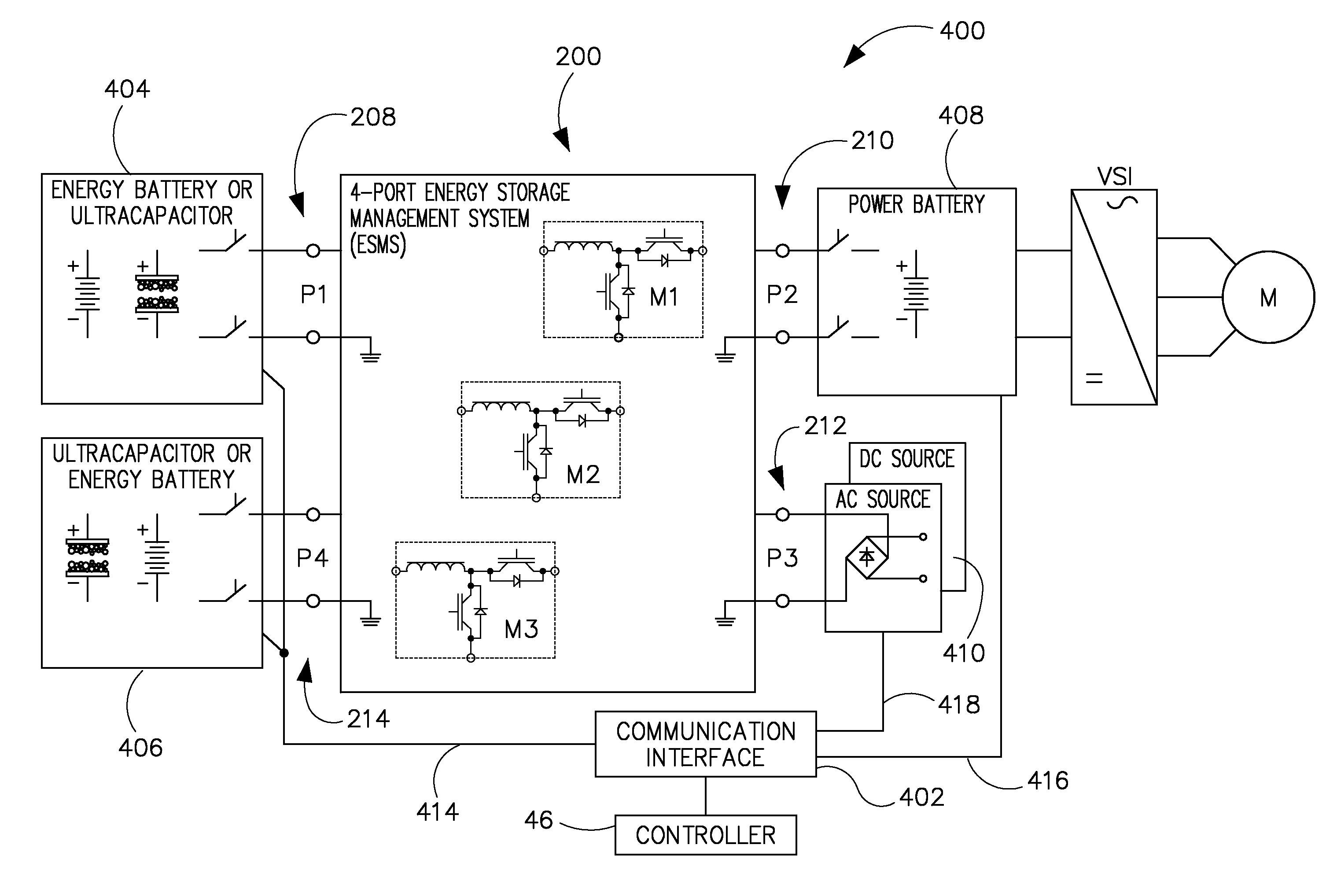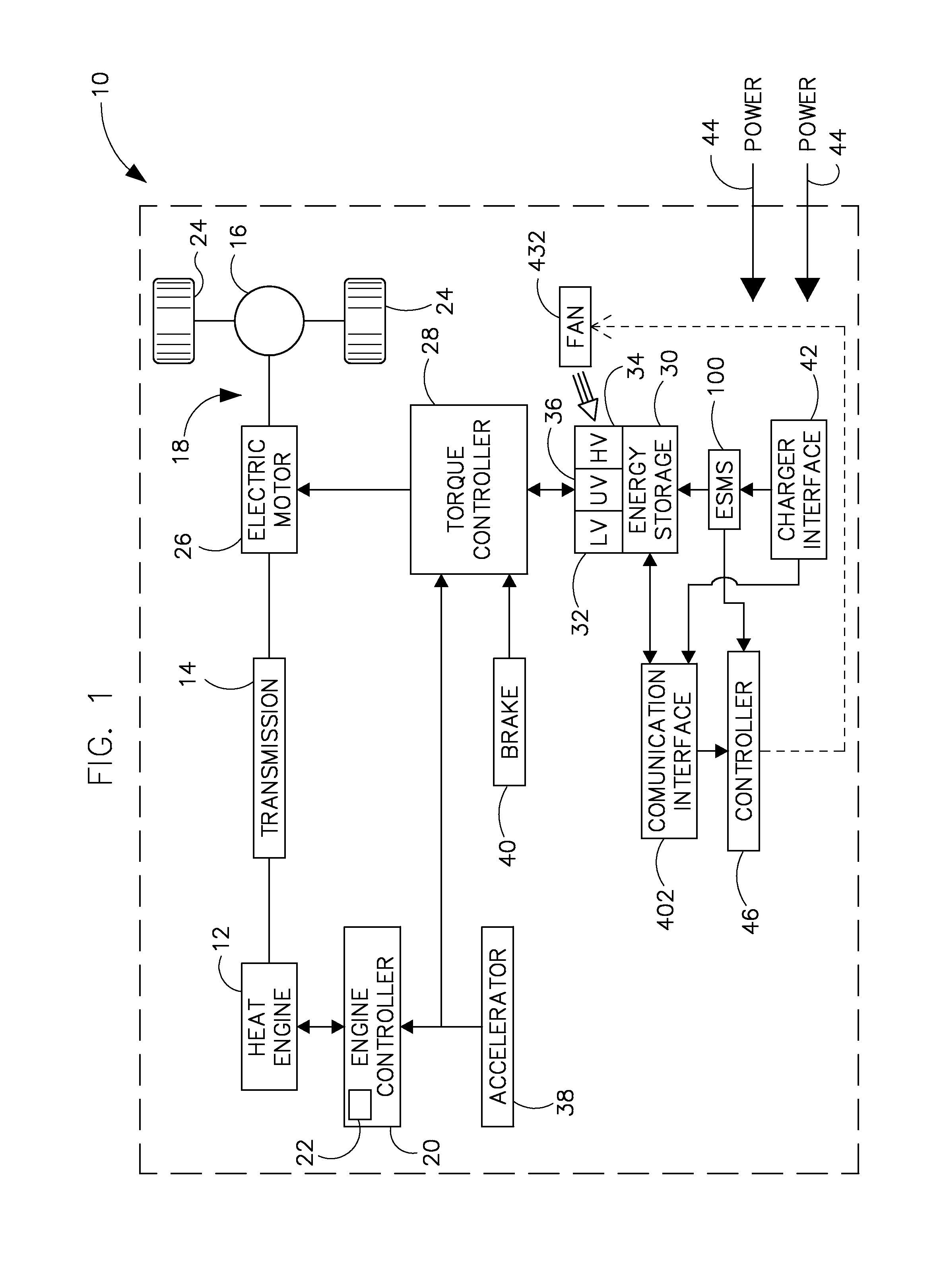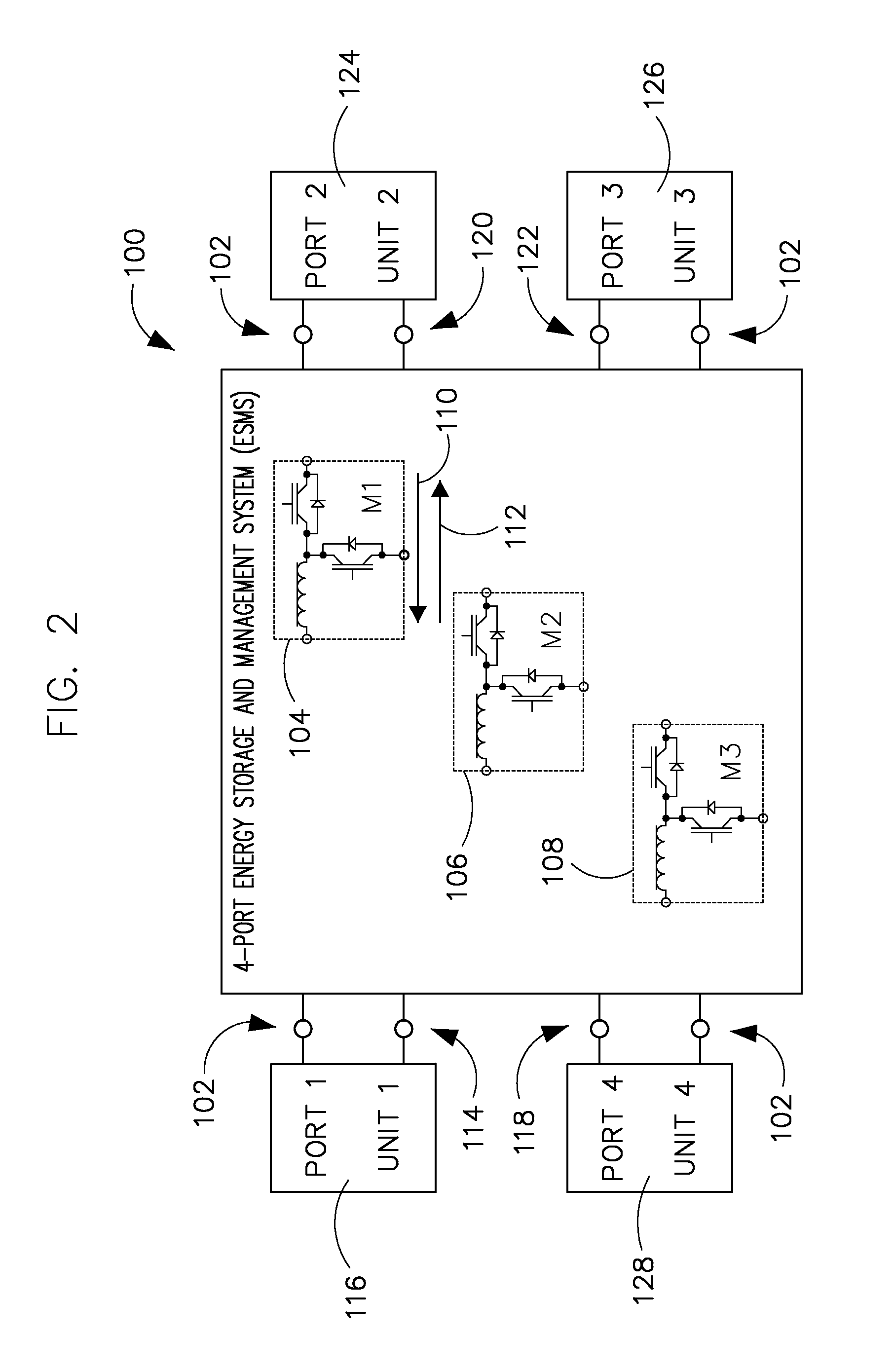Method and apparatus for charging multiple energy storage devices
a technology for energy storage devices and charging methods, applied in the direction of capacitors, battery/fuel cell control arrangements, transportation and packaging, etc., can solve the problems of unfavorable, unfavorable, and unfavorable, and achieve the marginal decrease in charging time. the effect of marginally increasing the charge tim
- Summary
- Abstract
- Description
- Claims
- Application Information
AI Technical Summary
Benefits of technology
Problems solved by technology
Method used
Image
Examples
case 1
[0056] Input voltage at port 3 212 is higher than battery voltage at port 1 208. In this case module 2 204 operates in buck mode and the current ILB in LU is regulated. Contactors K3 216 and K1 218 are closed, while M 224, K2 220 and K4 222 (UPOS) are open.
case 2
[0057] Input voltage at port 3 212 is lower than battery voltage at port 1 208. In this case contactors K3 216, M 224 and K4 222 (UPOS) are closed, while K1 218 and K2 220 are open. Module 2 204 is inactive (M2 is permanently on), module 1 202 operates in boost mode to boost the low input voltage up to some higher level. Module 3 206 bucks this voltage back to the set voltage of the energy battery at port 1 208. The current ILC in LW is controlled in a closed loop fashion.
[0058]Thus, FIGS. 5 and 6 illustrate different charging scenarios that may be implemented using ESMS 200 of FIG. 3, illustrating as well the direction of current flow corresponding to the charging arrangement illustrated. However and as stated, ESMS 200 may be used in multiple configurations. Different energy storage types and chargers may be connected to ESMS 200 according to embodiments of the invention, as illustrated in FIG. 7 as a table 300. That is, exemplary charging scenarios 1-5 302 include functions 304 a...
PUM
 Login to View More
Login to View More Abstract
Description
Claims
Application Information
 Login to View More
Login to View More - R&D
- Intellectual Property
- Life Sciences
- Materials
- Tech Scout
- Unparalleled Data Quality
- Higher Quality Content
- 60% Fewer Hallucinations
Browse by: Latest US Patents, China's latest patents, Technical Efficacy Thesaurus, Application Domain, Technology Topic, Popular Technical Reports.
© 2025 PatSnap. All rights reserved.Legal|Privacy policy|Modern Slavery Act Transparency Statement|Sitemap|About US| Contact US: help@patsnap.com



